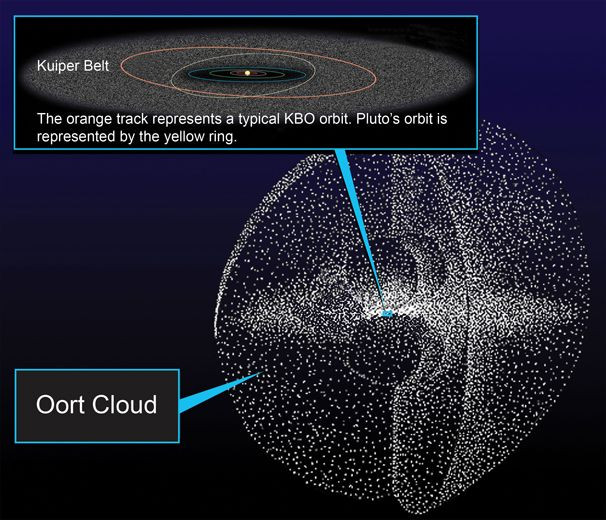New Dwarf Planet ‘Biden’ Discovered: 2012 VP113 Is The Most Distant ‘Family Member’ Of The Solar System [PHOTO]
Way beyond the orbit of Pluto spins a newly found dwarf planet, 2012 VP113, nicknamed "Biden" by the astronomers. The dwarf planet is believed to be located within the inner Oort cloud, joining the dwarf planet Sedna as a distant member of the solar system.

According to NASA, the discovery of the distant dwarf planet helps define the outer edge of the solar system while also leading to new insights on the mysterious Oort Cloud, considered the “edge” of the solar system. This area could contain up to 2 trillion comets and other objects and is located between 5,000 and 100,000 astronomical units away from the sun, reports NASA. (Each AU is the average distance between the sun and Earth, roughly 93 million miles.) The researchers break up the Oort Cloud into two sections, the much closer inner part, which contains Sedna and the newly discovered dwarf planet, and the outer section, which is believed to be where some comets originate. The Kuiper Belt is located outside of the orbit of Neptune and contains hundreds of thousands of icy objects.

The discovery of 2012 VP113 occurred on Nov. 5, 2012, and was led by Chadwick Trujillo, from the Gemini Observatory in Hawaii, and Scott Sheppard, from the Carnegie Institution in Washington, D.C. Additional observations pinpointed 2012 VP113’s orbit and general surface properties.
Kelly Fast, discipline scientist for NASA's Planetary Astronomy Program, Science Mission Directorate at NASA, said in a statement, “This discovery adds the most distant address thus far to our solar system’s dynamic neighborhood map.” As noted by NASA, the edge of the system solar is largely unknown and the orbit of Sedna and 2012 VP113 go beyond what can be observed by telescopes, meaning there is a lot out there in deep space that has yet to be discovered.

There could be around 900 objects that are 621 miles wide with similar orbits to Sedna and 2012 VP113. The two dwarf planets in the inner Oort Cloud were discovered at their closest point to the sun, 76 AU and around 80 AU, respectively, although their orbits extend hundreds of AU outward and beyond the reach of telescopes. "Some of these inner Oort Cloud objects could rival the size of Mars or Earth. This is because most of the inner Oort Cloud objects are so distant that even very large ones would be too faint to detect with current technology," said Sheppard in a statement.
More interestingly, there may be massive planet out there, 10 times the size of Earth, that could be affecting the orbit of Sedna and 2012 VP113. The researchers believe that, due to the similar orbits of the two dwarf planets, there may be such a planet in the inner Oort Cloud. The research was published in the journal Nature.
© Copyright IBTimes 2024. All rights reserved.






















